Submissions
Submission Preparation Checklist
As part of the submission process, authors are required to check off their submission's compliance with all of the following items, and submissions may be returned to authors that do not adhere to these guidelines.- The author has read and accepted the Publication Ethics and Malpractice Statement, Open Access Policy and Copyright and User's Notice.
- The text adheres to the layout, style and bibliography requirements outlined in the Author Guidelines.
- The typescript has been language checked by a native English speaker (if applicable).
- Information required for the “Comments for the Editor” text box is provided.
Copyright Notice
Copyright and Users’ NoticeAs an author publishing an article in this Journal, you agree to have the Creative Commons Attribution 4.0 International License (CC BY) applied to your work (the Work).
This license allows you as a user of a published version of the Work and any other user to copy, redistribute, remix, transform, and build upon the Work, in any format or medium, for any purpose including commercial purpose, on a perpetual basis provided they credit the Work and the authors. Users must explain any changes that were made from the original and may not suggest the authors endorse the use. The resultant work must be made available under the same terms, and must include a link to the CC BY 4.0 International License.
The full legal code of the Creative Commons Attribution 4.0 International License can be found at https://creativecommons.org/licenses/by/4.0/legalcode.
Proper attribution of a Work published in Tropical Grasslands-Forrajes Tropicales can be as follows:
Jones RM. 2014. The rise and fall of Siratro (Macroptilium atropurpureum) ‒ what went wrong and some implications for legume breeding, evaluation and management. Tropical Grasslands-Forrajes Tropicales 2:154–164. DOI: 10.17138/TGFT(2)154-164
As an author agreeing to the use of the CC BY license to publish your Work, you should be mindful of the following:
- If the Work contains any material such as photos, images, tables, figures, data, etc., that you do not own or control, you must obtain permission to use it and submit evidence of such permission to the Publisher. Further, the third party owner must approve the use of the CC BY license to her/his content as part of your Work.
- If you use in your Work content previously published in another article or work by another publisher, make sure that you have the rights to re-use such content in the Work you intend to submit or have submitted to Tropical Grasslands-Forrajes Tropicales, and that such content can be licensed under a CC BY license. If the previously used content was published under a CC BY license you could re-use such content. If the license applicable to the previously used content is more restrictive than CC BY, you must ascertain what rights you have under such license. Contact the former publisher to ask and to obtain the permissions, as necessary. In case you cannot ascertain your rights or do not have permission to use certain content, refrain from using it.
CIAT as the Publisher of Tropical Grasslands-Forrajes Tropicales reserves the right to remove any content of an article submitted to the journal such as photos, images, figures, tables, illustrations, data, audio and video files, and the like, whether before or after publication, as well as the full article, if there is a reason to believe that the content included in your submission lacks permission from the owner of the content.
Open Access Policy
This journal provides open access to its content on the principle that making research freely available to the public supports a greater global exchange of knowledge.
Our Open Access Policy implies immediate, irrevocable and free of charge online access to anyone subject to proper attribution and appropriate licenses.
In terms of licenses and agreements, authors of manuscripts accepted for publishing must have read and, by submitting a manuscript, accept the Publishing Agreement allowing CIAT, the Publisher of Tropical Grasslands-Forrajes Tropicales, exclusive rights to publish and use the author(s)’ contribution. Acceptance of the mentioned publishing agreement is a requirement before final acceptance of the peer-reviewed manuscript and its actual publication.
As an open access journal, CIAT applies the Creative Commons Attribution 4.0 International License (CC BY) to any of the types of article ('Work') published in Tropical Grasslands-Forrajes Tropicales. This license allows readers to copy, distribute, adapt, or reuse articles in whole or in part, for free and for any purpose, including commercial purposes. Anyone can reuse the work as long as they cite properly the author(s) and the source of the published work. Authors of an accepted manuscript for publishing by Tropical Grasslands-Forrajes Tropicales, agree with the use of the CC BY license if their contribution is published by this journal. For additional information, kindly read our Copyright and Users’ Notice.
Privacy Statement
Note: Your use of and interaction with the Tropical Grasslands-Forrajes Tropicales website(s) constitutes your unconditional acceptance of the practices described in this privacy policy, as they may be modified from time to time. If you do not agree with and accept all of the practices described in this privacy policy, do not use the Tropical Grasslands-Forrajes Tropicales website(s) and do not provide or submit any personally-identifying information. By providing personal information to us, you consent to our collection, use and disclosure of your personal information in accordance with this privacy policy.
Introduction
As an international organization with headquarters in Colombia, CIAT as the publisher accepts and complies with the personal data protection norms contained in the Colombian Law 1581 of 2012 and Decree 1377 of 2013 by guaranteeing the protection of personal information provided by you and making every reasonable effort to handle collected information appropriately. All information collected will be handled with care in accordance with CIAT’s standards for integrity, transparency and equity. The information collected through any of the following means will be subject to this policy: the web pages and content on the Tropical Grasslands-Forrajes Tropicales website(s), and the tools, software, submission systems, web forms, registration system, and any other means through which we interact with you.
Type of collected information
Personal Information: In our interaction with you, during the submission process of your manuscripts and during other instances, we may request personal information from you, such as your name, institutional affiliation, mailing address, email address, telephone number, and ORCID ID. Your provision of such information is strictly voluntary.
Technical Information: Through your interactions with the journal site, we may collect, have access to, store and use your computer’s IP address, the URL/domain name of any referring website, the time and date of your visit to the journal site, to enable us to understand how people interact with the journal site, to analyze data for trends and statistics, to help diagnose and solve issues with the site and our technologies, products, and services, and to optimize the performance of the journal site. Additionally, we use the following types of cookies: (1) Analytics cookies that anonymously remember your computer or mobile device when you visit our website; they keep track of browsing patterns and help us to build up a profile of how our readers use the website. (2) Service cookies that help us to make our website work as efficiently as possible; remember your registration and login details, and remember your settings preferences.
Use of Information
CIAT may use your personal information for the following purposes: Technical assistance in case that you require and notify via email when a new issue of the Journal is launched, and periodical newsletters of relevant information of forages research around the world. The information is mainly stored on or by our computers, computer networks, servers, tools, and systems.
CIAT may disclose your personal information as reasonably necessary to its employees and to third parties under contract with us such as vendors, volunteers, independent contractors, and consultants, web and technical support providers, other publishers and/or content hosting providers under contract with us, third parties authorized by you to receive such information, and as may be required or permitted by law. We may also share information regarding you and your manuscript or other research content as reasonably necessary with parties such as external editors, reviewers, community journal staff, and curators.
CIAT reserves the right to disclose personal information in the case of a government authorities’ request, national or international, where it is necessary or appropriate to investigate illegal or fraudulent facts. To establish or defend the rights of CIAT against fraud, legal action or in compliance with law; or if CIAT deems it necessary to investigate or act against fraud or illegal reports on this site.
No Sale or Leasing of Personal Information
Except as described in this privacy policy, CIAT will not disclose your personal information to third parties without your consent. We will not sell or lease your personal information to any third party. We may disclose aggregate demographic and statistical information with our business partners; this information is not specific to the identification of you as an individual.
No Responsibility for Third Party Websites
If you are linked or directed to, or click on, a third party website while visiting or interacting with the Tropical Grasslands-Forrajes Tropicales website, CIAT assumes no responsibility for the information you may provide to that party or on/at that website, or for how that party may use or disclose any information you may provide to them.
Exercising the Right to Know, Update, Rectify, or Delete Information, or Revoke Authorization for its Use
As holder of the personal data you can exercise at any time the following actions according to law: access to your personal data to know the details of treatment of them, updating them, rectification in the event of being inaccurate, incorrect or outdated and cancellation or deletion when it is considered not required for any of the purposes indicated in this privacy policy, or are being used for purposes not consented.
If you need access to the personal data you provided or exercise any of the rights provided by law, send an application to CIAT-TGFT-Journal@cgiar.org, or to the physical address:
Km 17 Recta Cali-Palmira, A.A. 6713, Cali, Colombia
Phone: +57 (2)445 0100
Fax: +57 (2)445 0073
CIAT will attend your claim within fifteen (15) days from the day after the day of receipt. If during this period, CIAT requests from you more information to execute your wish and no response is received after one (1) month, the claim will be deemed withdrawn. The request for deletion of the information and the revocation of the authorization will not proceed when you as holder have a legal or contractual duty to remain in the database.
Consent to Receive Email Communications
Except in countries or jurisdictions where it is not be permitted by law, we may from time to time send you email communications regarding our work or services in response to your use of the journal site. By providing your email address, you consent to receive such communications, but may opt out of receiving such communications by contacting us at CIAT-TGFT-Journal@cgiar.org.
If you wish to discuss what personal information we may have pertaining to you, or the handling or potential disclosure of the same, you may contact us at CIAT-TGFT-Journal@cgiar.org and we will promptly address your inquiry.



